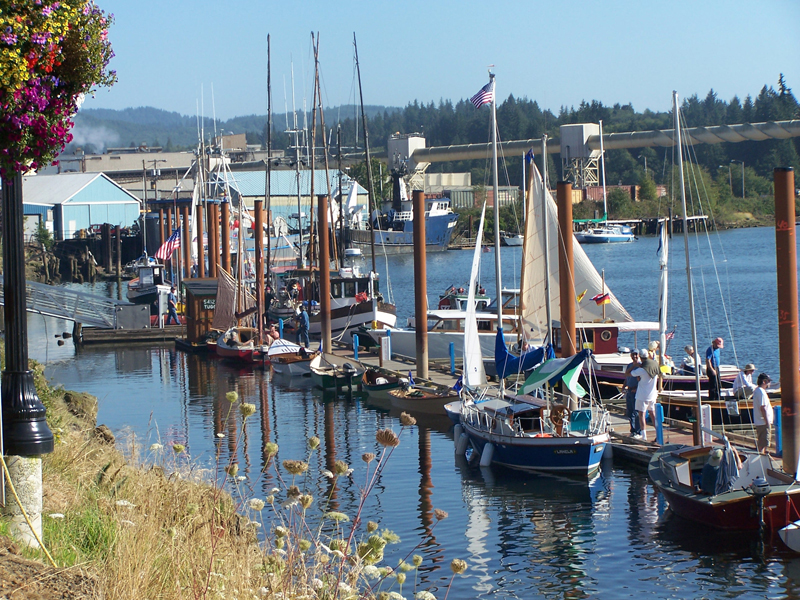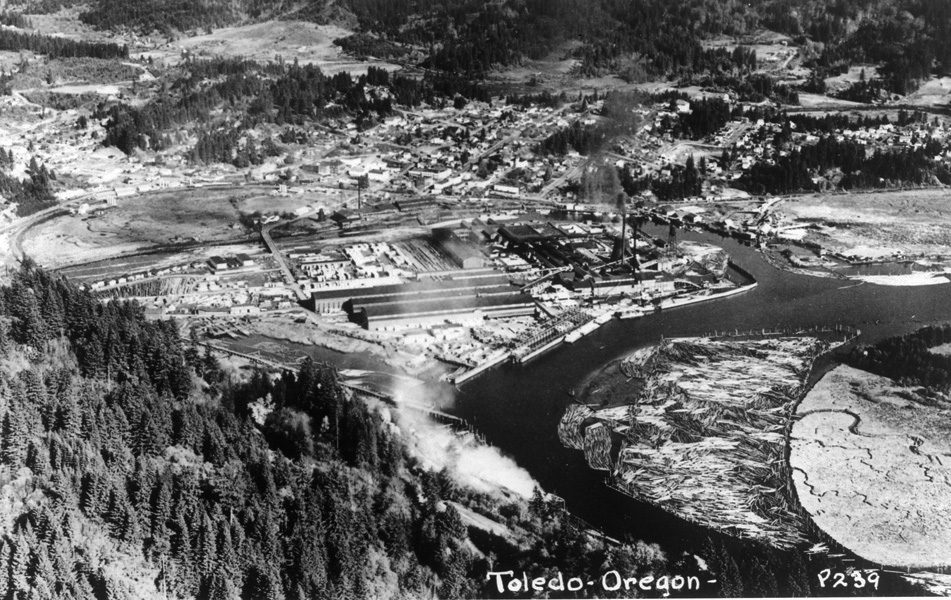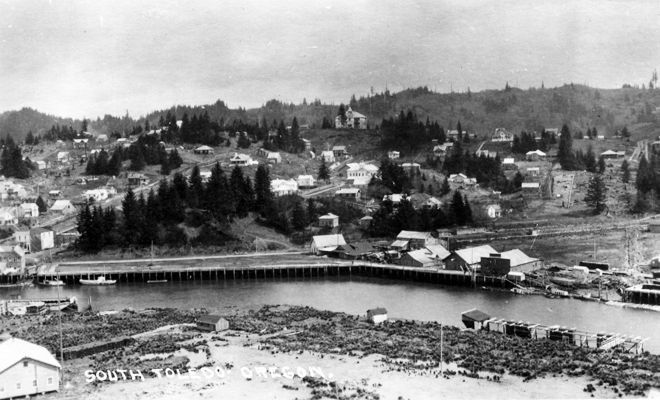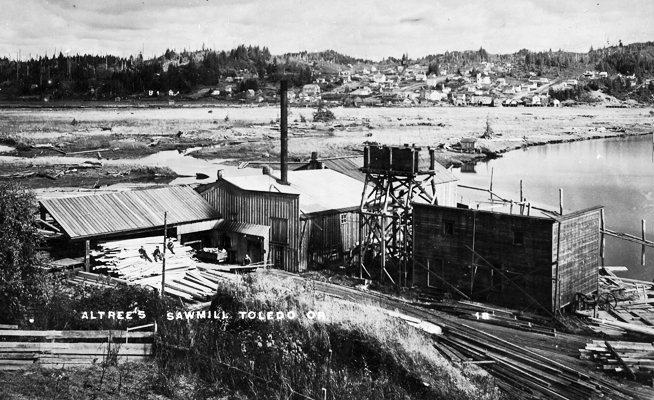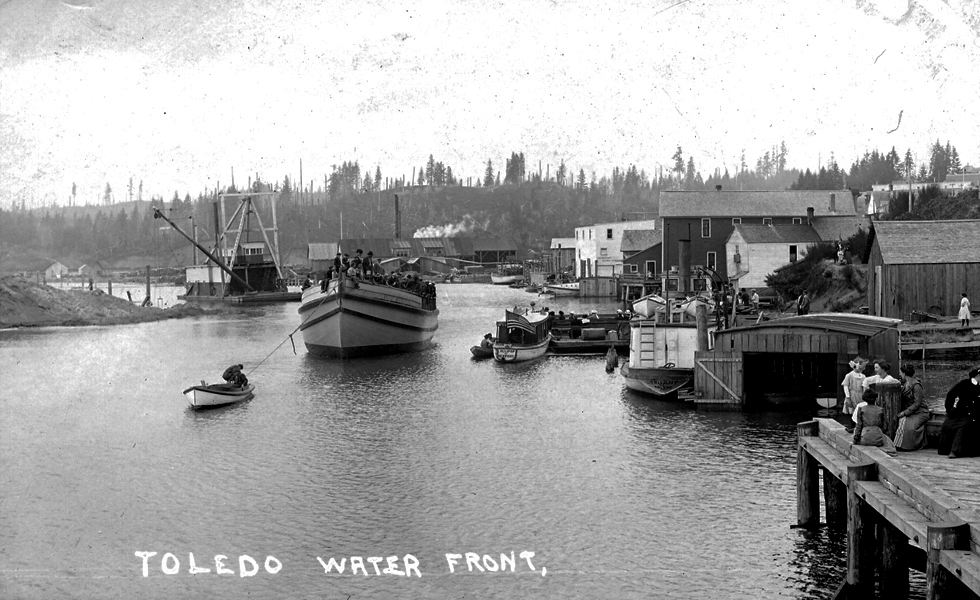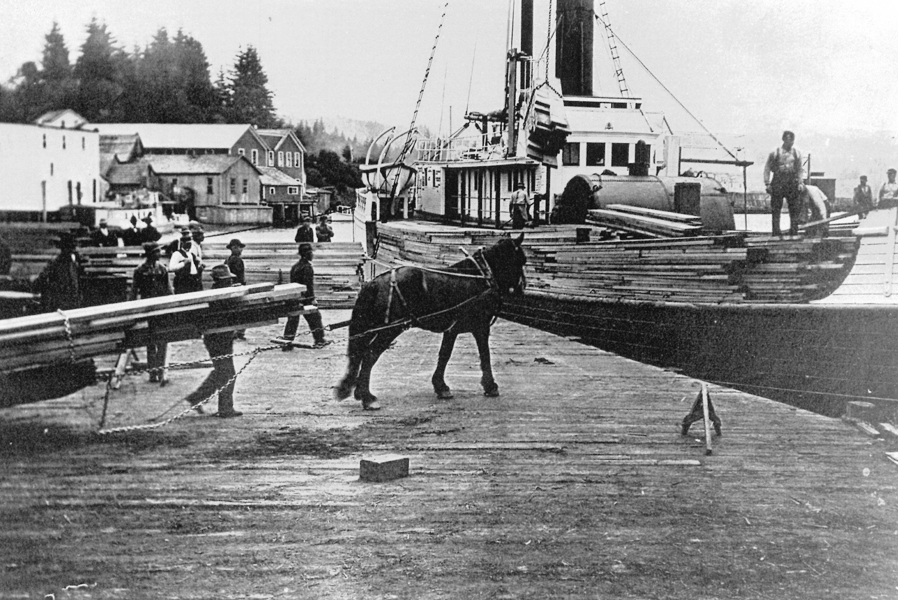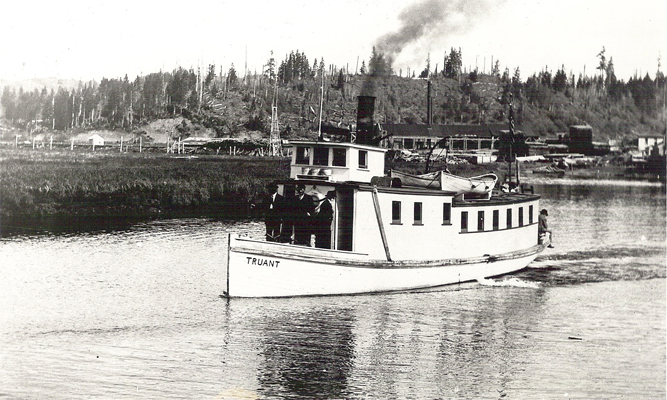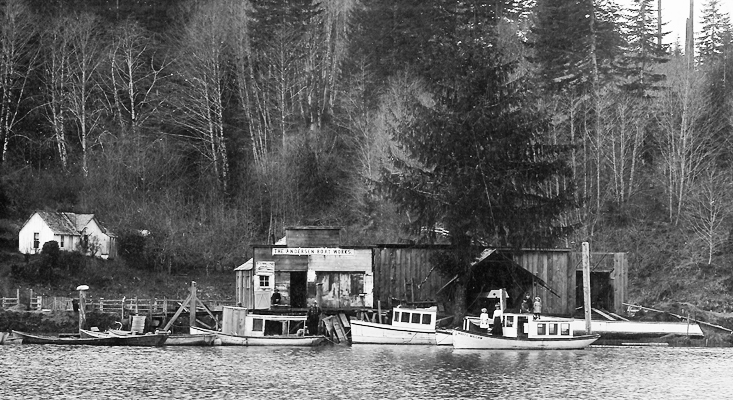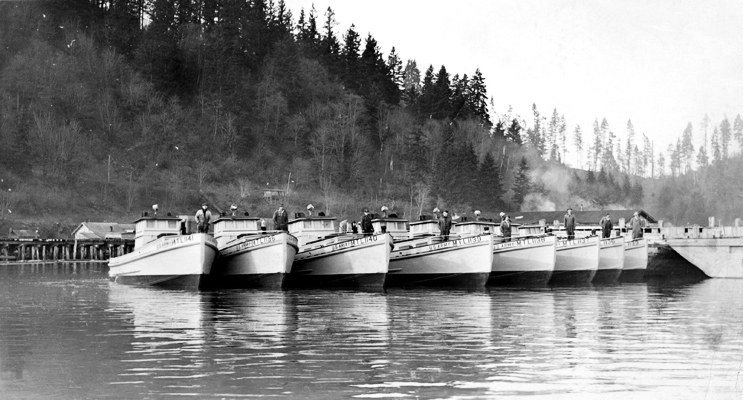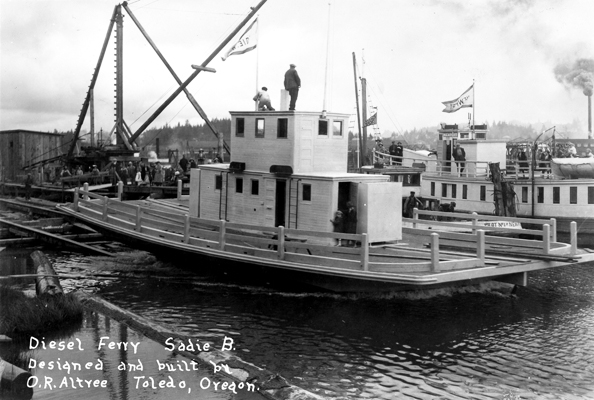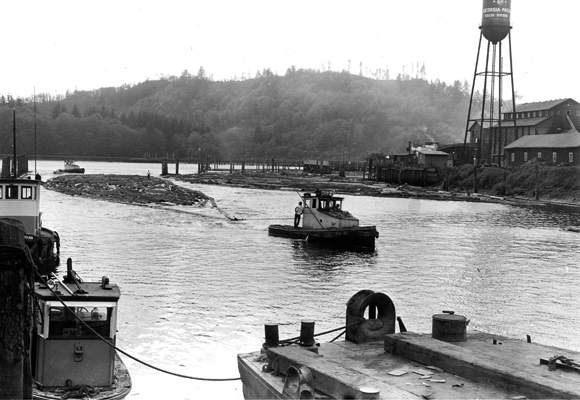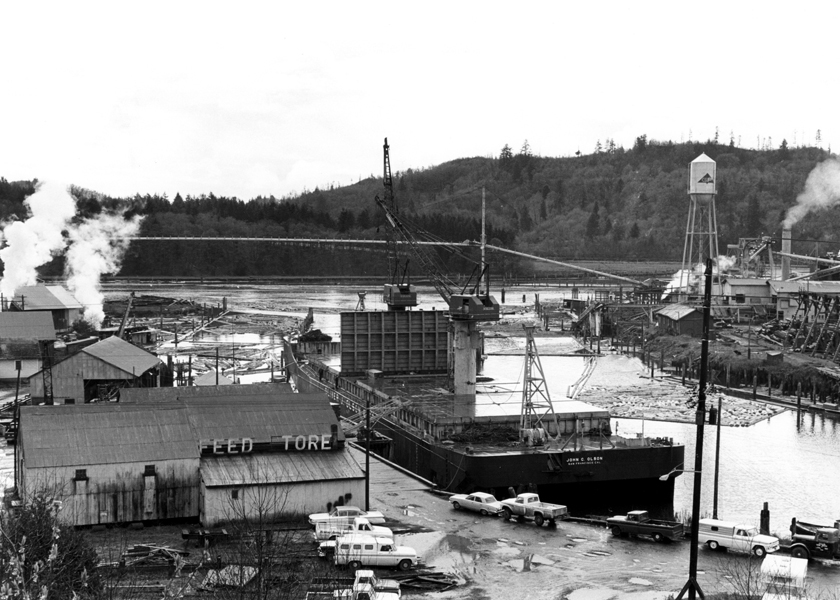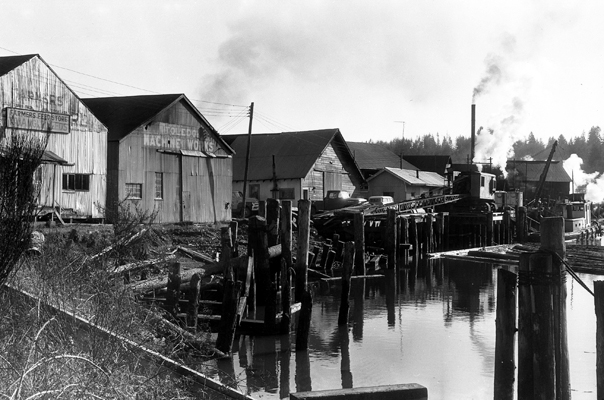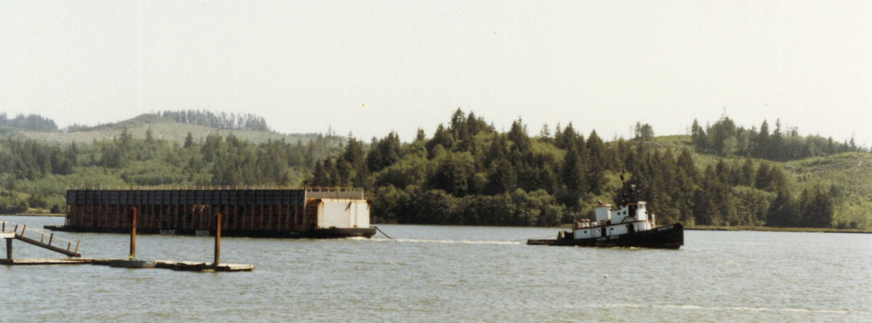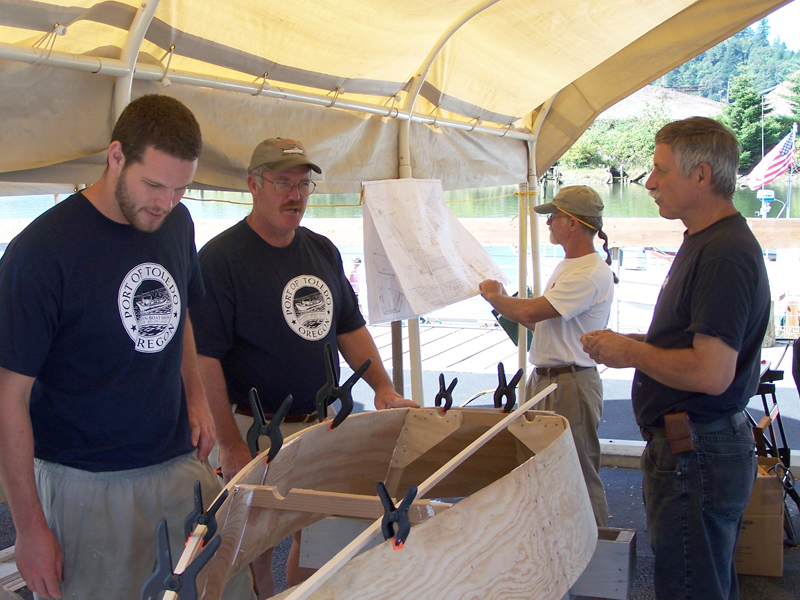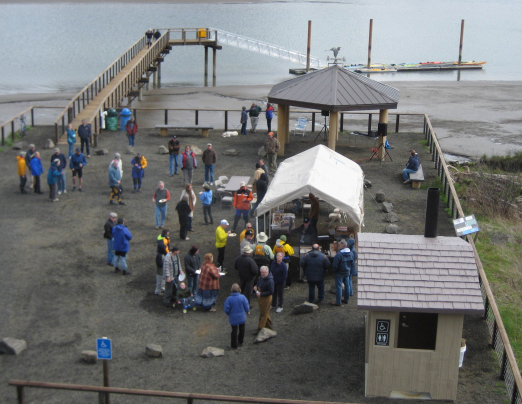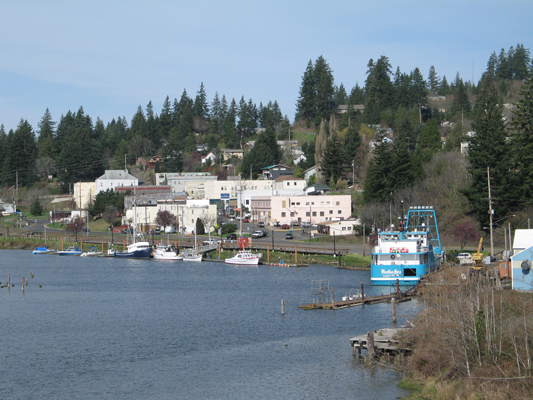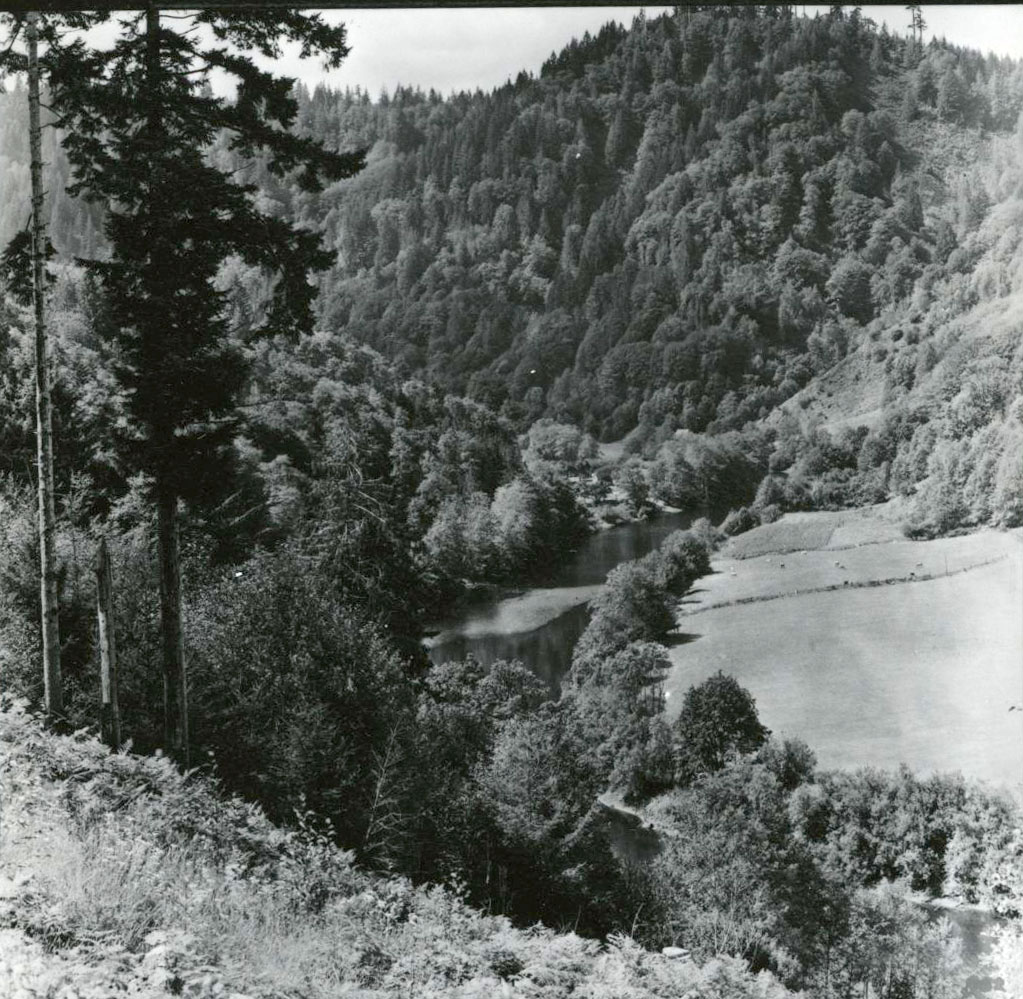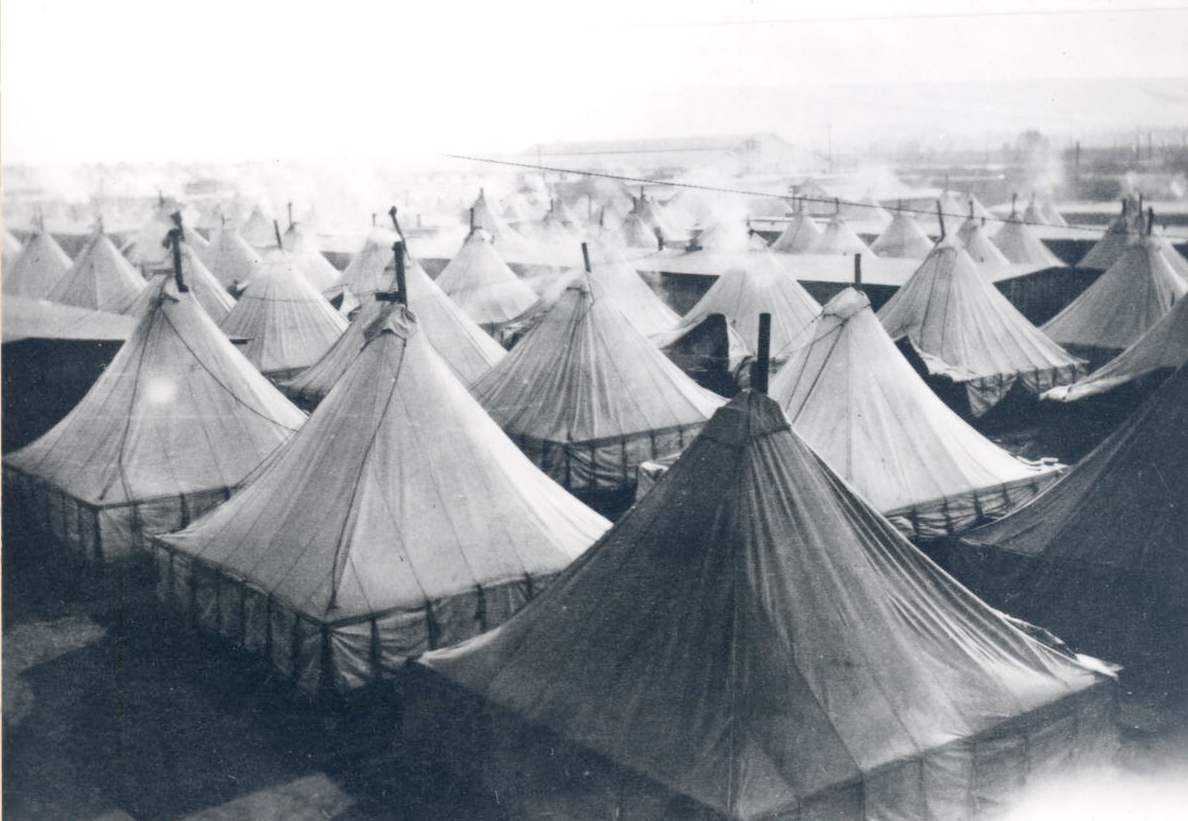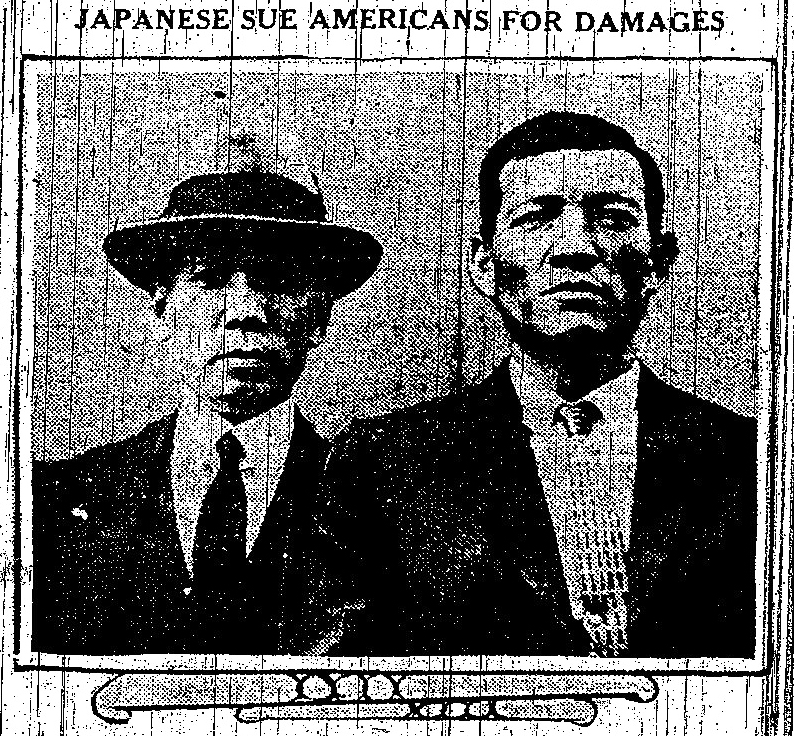In 1910, leaders in Toledo, Oregon, obtained voters' permission to form a port district, as allowed by a state law passed in 1909. Ports could tax, borrow, buy, lease, and operate property in order to promote business and obtain public access to waterways. The governor appointed the first five commissioners; later candidates were elected to staggered four-year terms.
The first commission issued $50,000 in bonds, backed by a tax on property owners, and purchased property along Depot Slough on the south edge of town. They built a wharf and dredged from Depot Slough a mile down the Yaquina River, twelve miles from deep water at Newport. In 1914, the port secured federal dredging of Depot Slough and the Yaquina River shoal.
In 1918, the port bought land and leased it to the U.S. Spruce Products Division for a huge mill to cut airplane frames for World War I. The war ended before production could begin, however, and the C.D. Johnson interests bought the equipment and site. By 1923, rail lines from Siletz to Yachats, running through former Indian tribal lands, were feeding the mill with logs. The Johnson lumber mill was sold to Georgia Pacific in 1951, which reopened in 1957 as a pulp mill that was still operating in 2011. The Toledo and Newport commissions cooperated to jointly finance the dredging and ocean jetties at the entrance to the Yaquina River to attract shipping.
Prior to World War I, about 500 people lived in Toledo, with about 5,500 in Lincoln County. Almost everyone in and around Toledo was dependent in some way on logging and the mills. From the 1920s to the present, port activity was overshadowed by the operations of Pacific Spruce, Georgia Pacific, and other mills.
To aid local mills and attract more business, the port campaigned with mills and government agencies to secure dredging legislation. About every ten years, the Army Corps of Engineers deepened Depot Slough and a few shoals upriver, but only to ten feet, deep enough for barges but not for ships. Some logs, lumber, and shingles passed over the Port of Toledo dock, but most went by barge from private mills.
Mills closed periodically during the Depression but boomed during World War II, as C.D. Johnson began building tugboats for the U.S. Army. As the slough silted up, however, the port lost tax revenues and traffic from its wharf declined. The largest amount of waterborne commerce—400,000 short tons in 1930, 715,000 in 1960—ran on the river and bay from the 1920s through the 1960s, before the forest industry declined and Georgia Pacific pulp went by land. Among the port lessees during this period were the Farmers Creamery Cooperative, Andersen Boat Works, and Hoffman Towing.
In the 1960s, water-quality regulations and planning requirements influenced dredging and property development. The port commission relied less on local levies and more on grants and loans from agencies such as the Oregon Business Development Department and the Confederated Tribes of Siletz Indians.
From the 1970s onward, the port commission shifted its intent from shipping to light industrial and recreational sites. The port augmented and beautified its property along Depot Slough, acquired warehouse and business space, built two boat-launching parks downriver, hosted an annual wooden boat show, and began a youth boatbuilding and sailing program. The port also purchased a defunct, private boatyard to provide fishermen a place to haul their boats out and to boost the local economy.
By 1998, the port had over forty moorage and lease agreements, including those with Yaquina Boat Equipment, American Grounding Systems, Wiggins Towing, and Island Wild Seafoods. Annual port budgets rose to a million dollars in 2006. While the port never paid for itself, it provided public access to and promoted business on the waterfront.
-
Toledo, Wooden Boat Show, 2007.
Second-annual Wooden Boat Show, Toledo, Aug. 2006. Courtesy Port of Toledo
-
![Yaquina River, city of Toledo, and C.D. Johnson mill (center), 1930s.]()
Toledo, Johnson Mill, 1930s.
Yaquina River, city of Toledo, and C.D. Johnson mill (center), 1930s. Courtesy Lincoln County Hist. Soc.
-
![]()
The south waterfront in Toledo in about 1909.
Courtesy Lincoln County Hist. Soc.
-
![Altree Mill, with Toledo in background, about 1909.]()
Toledo, Altree Mill.
Altree Mill, with Toledo in background, about 1909. Courtesy Lincoln County Hist. Soc.
-
![]()
The Ahwanda (center) in Toledo in 1912.
Courtesy Lincoln County Hist. Soc.
-
![Loading lumber at Toledo Fir and Spruce Company dock, about 1910.]()
Toledo, loading lumber, ca 1910.
Loading lumber at Toledo Fir and Spruce Company dock, about 1910. Courtesy Lincoln County Hist. Soc.
-
![Jack Fogarty's boat "Truant," Toledo, about 1914.]()
Toledo, Fogarty's Truant.
Jack Fogarty's boat "Truant," Toledo, about 1914. Courtesy Lincoln County Hist. Soc.
-
![Andersen Boat Works, Toledo.]()
Toledo, Andersen Boat Works.
Andersen Boat Works, Toledo. Courtesy Lincoln County Hist. Soc.
-
![Johnson tugboats built in Toledo, about 1943.]()
Toledo, Johnson Tugs.
Johnson tugboats built in Toledo, about 1943. Courtesy Lincoln County Hist. Soc.
-
![Diesel ferry "Sadie B.," Toledo, June 1924.]()
Toledo, Sadie B.
Diesel ferry "Sadie B.," Toledo, June 1924. Courtesy Lincoln County Hist. Soc.
-
![Hoffman tug towing logs, Toledo, 1957.]()
Toledo, Hoffman Tug and Tow.
Hoffman tug towing logs, Toledo, 1957. Courtesy Lincoln County Hist. Soc.
-
![Toledo waterfront, Olsen barge along dock, 1957.]()
Toledo, Olson Barge and Port Dock.
Toledo waterfront, Olsen barge along dock, 1957. Courtesy Lincoln County Hist. Soc.
-
![Repairing Port of Toledo's docks, 1960.]()
Toledo, port dock repair.
Repairing Port of Toledo's docks, 1960. Courtesy Lincoln County Hist. Soc.
-
![Sause Brothers tug and barge, Toledo, 1983.]()
Toledo, Sause tug and barge.
Sause Brothers tug and barge, Toledo, 1983. Courtesy Port of Toledo
-
![(L to R) Adam Kriz, Mike Kriz, Rick Johnson, Jim Chambers, Wooden Boat Show, Toledo, Aug. 2007.]()
Toledo, Wooden Boat Show, 2006.
(L to R) Adam Kriz, Mike Kriz, Rick Johnson, Jim Chambers, Wooden Boat Show, Toledo, Aug. 2007. Courtesy Port of Toledo
-
![Paddle Park grand opening and Paddle-In, March 2008.]()
Toledo, Paddle Park, Mar 2008.
Paddle Park grand opening and Paddle-In, March 2008. Courtesy Port of Toledo
-
![Toledo marina, 2007.]()
Toledo Marina.
Toledo marina, 2007. Courtesy Port of Toledo
Related Entries
-
![Alsea Subagency of Siletz Reservation]()
Alsea Subagency of Siletz Reservation
In September 1859, Joel Palmer, the Superintendent of Indian Affairs fo…
-
![Spruce Production Division]()
Spruce Production Division
In 1918, during World War I, almost thirty thousand U.S. soldiers were …
-
![Toledo Incident of 1925]()
Toledo Incident of 1925
In 1925, a mob forced a Japanese labor crew to leave Toledo, a communit…
Map This on the Oregon History WayFinder
The Oregon History Wayfinder is an interactive map that identifies significant places, people, and events in Oregon history.
Further Reading
Hitchman, James H. The Port of Toledo, Oregon, 1910-2010. Toledo, Ore.: Port of Toledo, Oregon, 2010.



